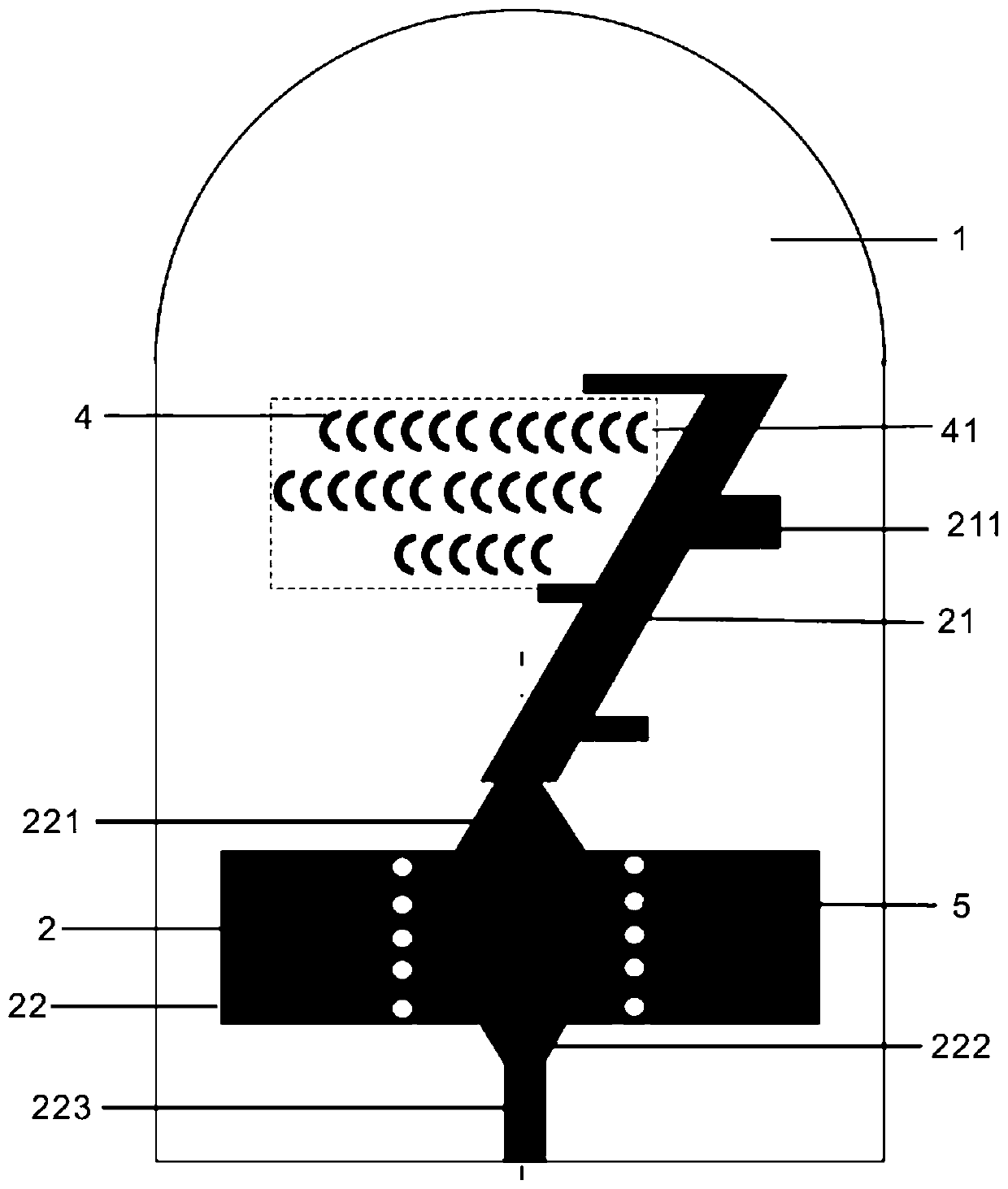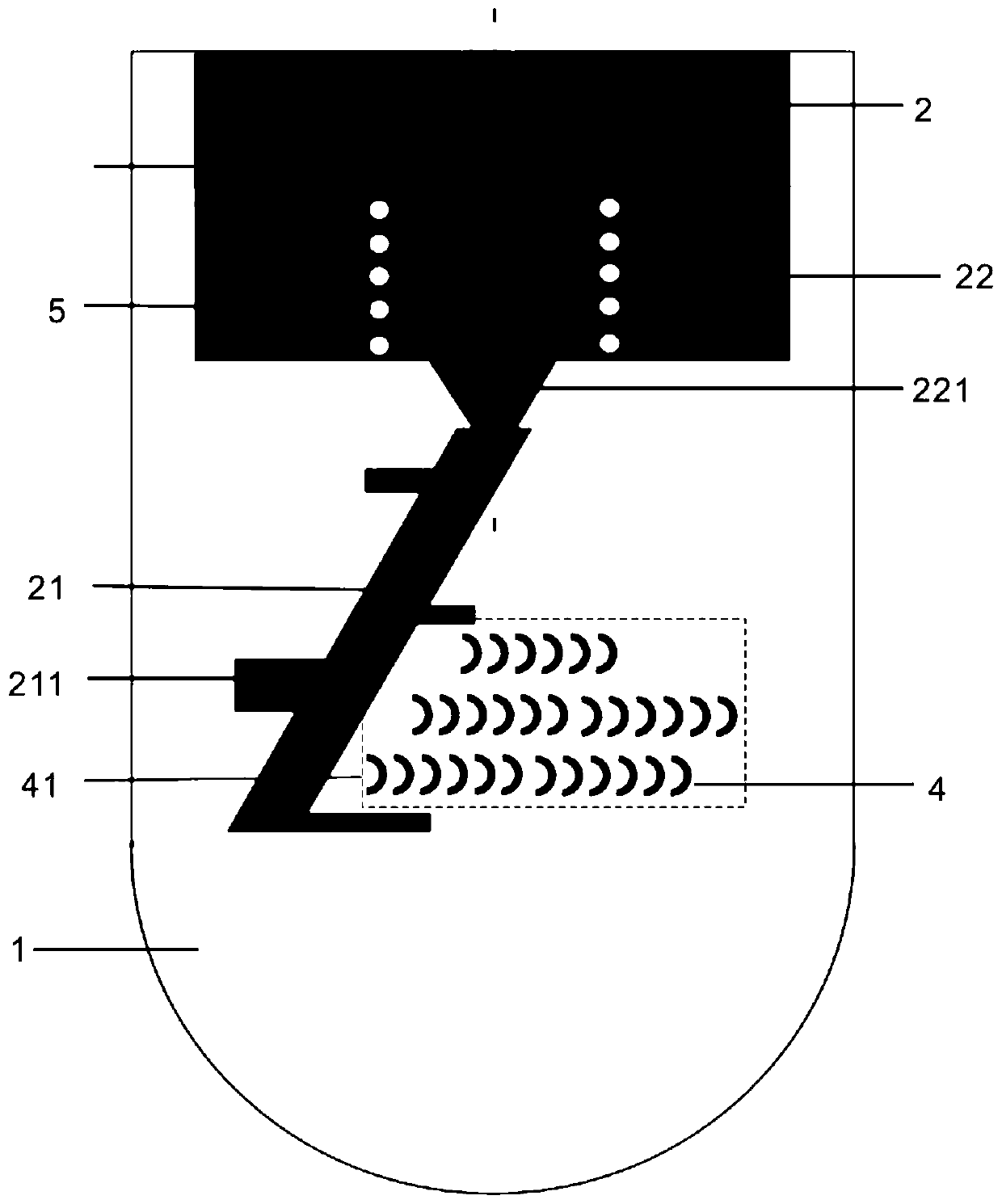High-gain log periodic antenna based on non-resonant superinterface
A logarithmic periodic antenna and non-resonant technology, which is applied to resonant antennas, antenna arrays powered separately, antennas, etc., can solve the problems of large loss, limited application in the communication field, strong dispersion, etc., to increase gain, realize miniaturization, The effect of reducing the gain difference
- Summary
- Abstract
- Description
- Claims
- Application Information
AI Technical Summary
Problems solved by technology
Method used
Image
Examples
Embodiment 1
[0046] refer to Figure 7 , Figure 12 , the non-resonant super-interface 41 is arranged in 3 rows, and loaded in the middle of the dipole array 211. The simulation and test results show that the antenna gain is significantly improved in the low frequency range of 27-29 GHz when the structure of the non-resonant super-interface 41 is loaded. The gain value at low frequency is improved, and the gain difference between it and the high frequency point is reduced, which is beneficial to its application in wireless communication systems. The gain results are shown in Figure 12 in case 2; see the results of the original antenna Figure 12 in case 1.
Embodiment 2
[0048] refer to Figure 8 , Figure 12 , the non-resonant super-interface 41 is arranged in 6 rows and 3 columns plus 6 rows and columns, and loaded on the upper part of the dipole array 211. The simulation and test results show that the antenna gain value increases over the entire frequency band when the structure of the non-resonant super-interface 41 is loaded. 1-1.85dB, the gain result see Figure 12 in case 3.
Embodiment 3
[0050] refer to Figure 9 , Figure 11 , Figure 12 , the non-resonant superinterface 41 is arranged in 6 rows and 3 columns plus 6 rows and columns, loaded on the top of the dipole array 211, the non-resonant superinterface 41 is arranged in 3 rows, and loaded in the middle of the dipole array 211, simulation and test results It shows that loading the structure of the non-resonant superinterface 41 not only reduces the gain difference between the low frequency band and the high frequency band, but also improves the gain values at all frequency points. The gain results are shown in Figure 11 , Figure 12 , the gain increment can reach up to 4dB, and the gain float is also reduced from 5.3dB to 3.4dB.
[0051] refer to Figure 11 , the feed port S of Embodiments 1, 2 and 3 of the present invention 11 Satisfied that the entire working bandwidth is below -10dB.
[0052] refer to Figure 10 , the non-resonant superinterface 41 of the present invention is within the 27GHz...
PUM
 Login to view more
Login to view more Abstract
Description
Claims
Application Information
 Login to view more
Login to view more - R&D Engineer
- R&D Manager
- IP Professional
- Industry Leading Data Capabilities
- Powerful AI technology
- Patent DNA Extraction
Browse by: Latest US Patents, China's latest patents, Technical Efficacy Thesaurus, Application Domain, Technology Topic.
© 2024 PatSnap. All rights reserved.Legal|Privacy policy|Modern Slavery Act Transparency Statement|Sitemap



